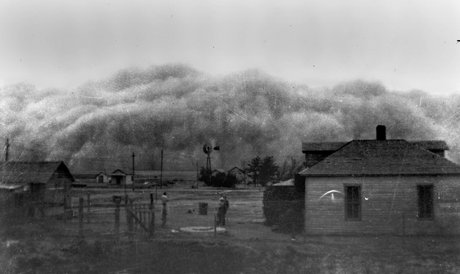The pantoum, or pantun, originated in Malaysia in the 15th Century. Originally, the poem had only two couplets. However, in time, the poem lengthened. Victor Hugo introduced the pantoum to Europe when he published one in his Les Orientales collection. Charles Baudelaire composed the popular pantoum, Harmonie de Soir. Later, poets like Anne Waldman and Donald Justice brought the poetic form to America.
The rhyming scheme is ABAB, but can also be ABBA. Here is the format for a five stanza quatrain (four is also common):
Stanza 1: 1, 2, 3, 4
Stanza 2: 2, 5, 4, 6
Stanza 3: 5, 7, 6, 8
Stanza 4: 7, 9, 8, 10
Stanza 5: 9, 3, 10, 1
I see the magic of a father and a daughter
As they build sandcastles on the beach.
I watch the pair as they lounge by the blue water,
Knowing fatherhood is something that you cannot teach.
As they build sandcastles on the beach,
He sculpts the sand with a big strong hand.
Knowing fatherhood is something that you cannot teach;
Next to him, she look so little as she pours the sand.
He sculpts the sand with a big strong hand.
No words are needed as they work side by side.
Next to him, she looks so little as she pours the sand.
Father an daughter share a bond that they cannot hide.
No words are needed as they work side by side.
Clad in an orange bikini, she builds the castle tall.
Father and daughter share a bond that they cannot hide.
AS the waves encroach, he builds a giant wall.
Clad in an orange bikini, she builds the castle tall.
I watch the pair as they lounge by the blue water.
As the waves encroach, he builds a giant wall.
I see the magic of a father and a daughter.

http://www.shutterstock.com/s/sandcastle/search.html

http://www.shutterstock.com/s/sandcastle/search.html
Here is Donald Justice's Pantoum of the Great Depression, which has no rhyming scheme, but does repeat each line.
Our lives avoided tragedy
Simply by going on and on.
Without end and without any apparent meaning.
Oh, there were storms and small catastrophes.
Simply by going on and on
We managed. No need for the heroic.
Oh, there were storms and small catastrophes.
I don't remember all the particulars.
We managed. No need for the heroic.
There were the usual celebrations, the usual sorrows.
I don't remember all the particulars.
Across the fence, the neighbours were our chorus.
There were the usual celebrations, the usual sorrows.
Thank God no one said anything in verse.
The neighbours were our only chorus.
And if we suffered we kept quiet about it.
At no time did anyone say anything in verse.
It was the ordinary pities and fears consumed us.
We gathered on porches; the moon rose; we were poor.
No audience would ever know our story.
It was the ordinary pities and fears consumed us.
We gathered on porches; the moon rose; we were poor.
What audience would every know our story?
Beyond our windows shone the actual world.
We gathered on porches; the moon rose; we were poor.
And time went by, drawn by slow horses.
Somewhere beyond our windows shone the world.
The Great Depression had entered our souls like fog.
And time went by, drawn by slow horses.
We did not ourselves know what the end was.
The Great Depression had entered our souls like fog.
We had our flaws, perhaps a few private virtues.
But we did not ourselves know what the end was.
People like us simply go on.
We had our flaws, perhaps a few private virtues.
But it is by blind chance only that we escape tragedy.
And there is no plot in that; it is devoid of poetry.

http://www2.ljworld.com/photos/galleries/2008/oct/14/dark_memories_revived/
We managed. No need for the heroic.
Oh, there were storms and small catastrophes.
I don't remember all the particulars.
We managed. No need for the heroic.
There were the usual celebrations, the usual sorrows.
I don't remember all the particulars.
Across the fence, the neighbours were our chorus.
There were the usual celebrations, the usual sorrows.
Thank God no one said anything in verse.
The neighbours were our only chorus.
And if we suffered we kept quiet about it.
At no time did anyone say anything in verse.
It was the ordinary pities and fears consumed us.
We gathered on porches; the moon rose; we were poor.
No audience would ever know our story.
It was the ordinary pities and fears consumed us.
We gathered on porches; the moon rose; we were poor.
What audience would every know our story?
Beyond our windows shone the actual world.
We gathered on porches; the moon rose; we were poor.
And time went by, drawn by slow horses.
Somewhere beyond our windows shone the world.
The Great Depression had entered our souls like fog.
And time went by, drawn by slow horses.
We did not ourselves know what the end was.
The Great Depression had entered our souls like fog.
We had our flaws, perhaps a few private virtues.
But we did not ourselves know what the end was.
People like us simply go on.
We had our flaws, perhaps a few private virtues.
But it is by blind chance only that we escape tragedy.
And there is no plot in that; it is devoid of poetry.

http://www2.ljworld.com/photos/galleries/2008/oct/14/dark_memories_revived/
For more about the pantoum, visit http://www.utmostchristianwriters.com/articles/article3020.php.
No comments:
Post a Comment